In this lesson, we will look at pedal steel bends that are based out of common triad shapes.
| Chops: Intermediate Theory: Beginner Lesson Overview: • Create pedal steel-inspired licks using basic triads. • Learn how to bend melody notes while keeping other notes stationary. • Develop ideas based on inversion shapes all over the fretboard. |
| Print it! Click here to download a high-resolution, printable PDF of the notation. |
A signature sound of the pedal steel is bending one note of a chord while the others remain stationary. This is achieved with the aid of foot pedals and knee levers—two elements that we need to learn to replicate on the guitar. There are a seemingly endless amount of methods of approaching this, so we will narrow it down to just a few.
In this lesson, we will look at pedal steel bends that are based out of common triad shapes. These are great for embellishing your rhythm playing behind someone or even for taking a lush solo over a ballad. Although pedal steel attacks are usually done in combination with a volume swell and vibrato, I left those out so we can focus on the technique. Once you feel comfortable with the examples try adding vibrato and volume swells to each new chord. Remember, pedal steel players don't strum, so use a hybrid pick-and-fingers approach.
Fig. 1 is based around an A major triad in second inversion (which means the 5th is the lowest note). You can think of it as an A major barre chord at the fifth fret minus the barring finger. This is very easy to visualize and it's a position we can get a lot of mileage out of. The bottom two notes of the triad are played with third and fourth finger and the top note is played with the index finger. Use your index finger to bend the minor 3rd (C) up a half step to the major 3rd (C#). Be careful not to pull the stationary notes out of tune.
or download example audio
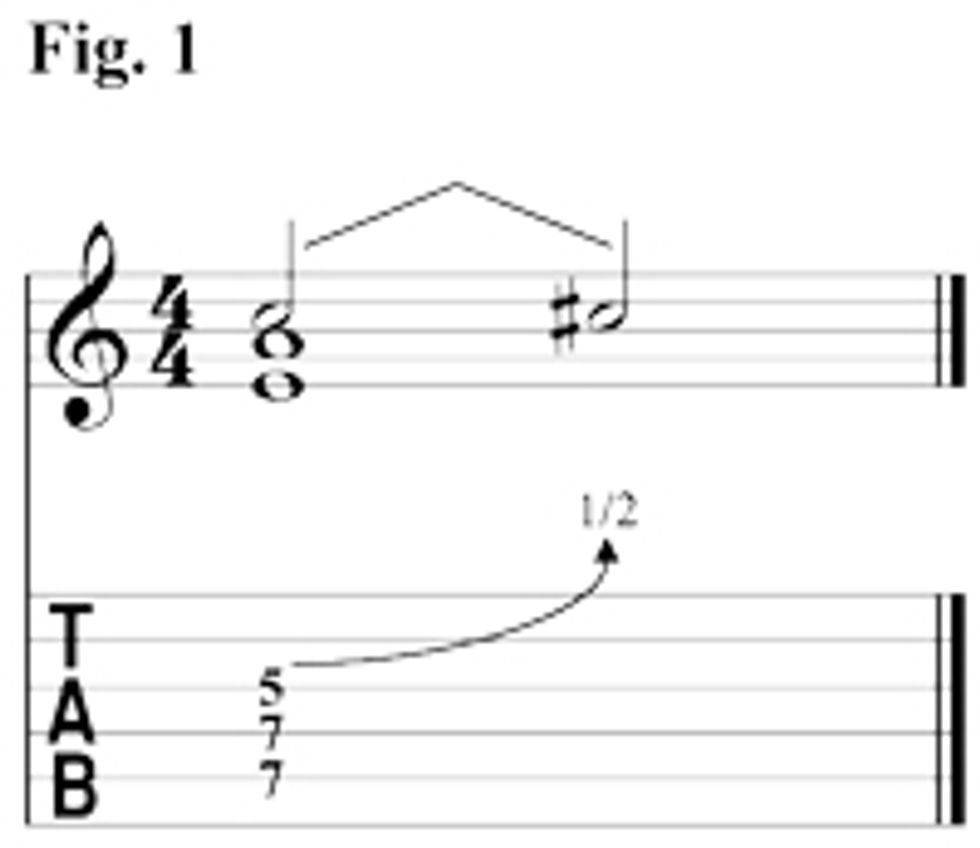
In Fig. 2 we will use the same fingering as before but we approach the third of the chord from a whole step below.
or download example audio
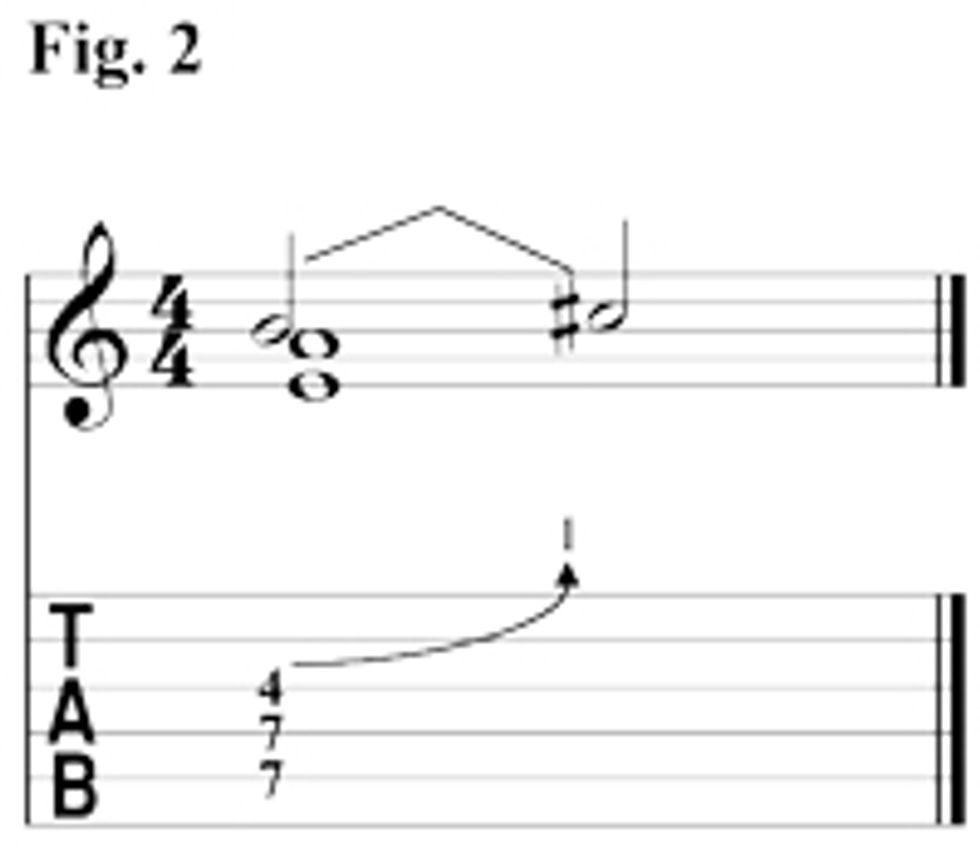
We mix things up with Fig. 3. In the previous examples, we pluck the note and then bend into a chord tone, completing the sound of a triad. Here, we will bend the note first, pluck it, and then release the bend resolving to our target note. This is called a pre-bend and can be used to resolve into either major or minor triads.
or download example audio
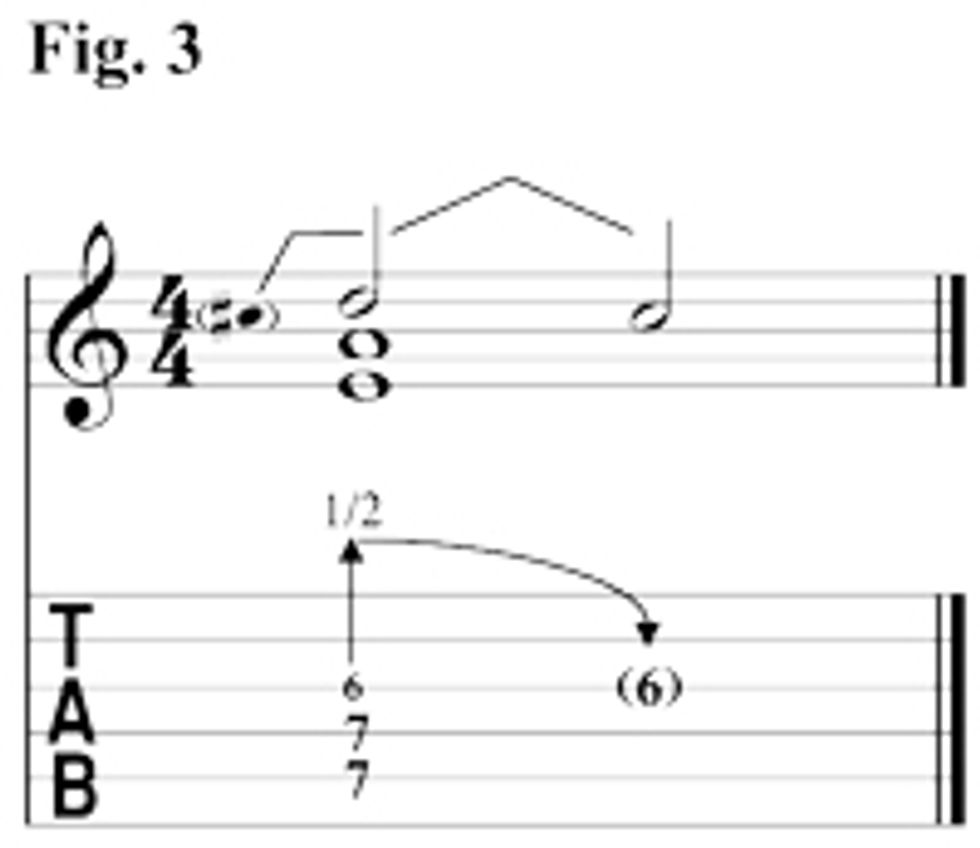
We move to a root position A major triad in Fig. 4. Use the same fingering as the previous examples with your index finger grabbing the b5 and bending it up a half step.
or download example audio
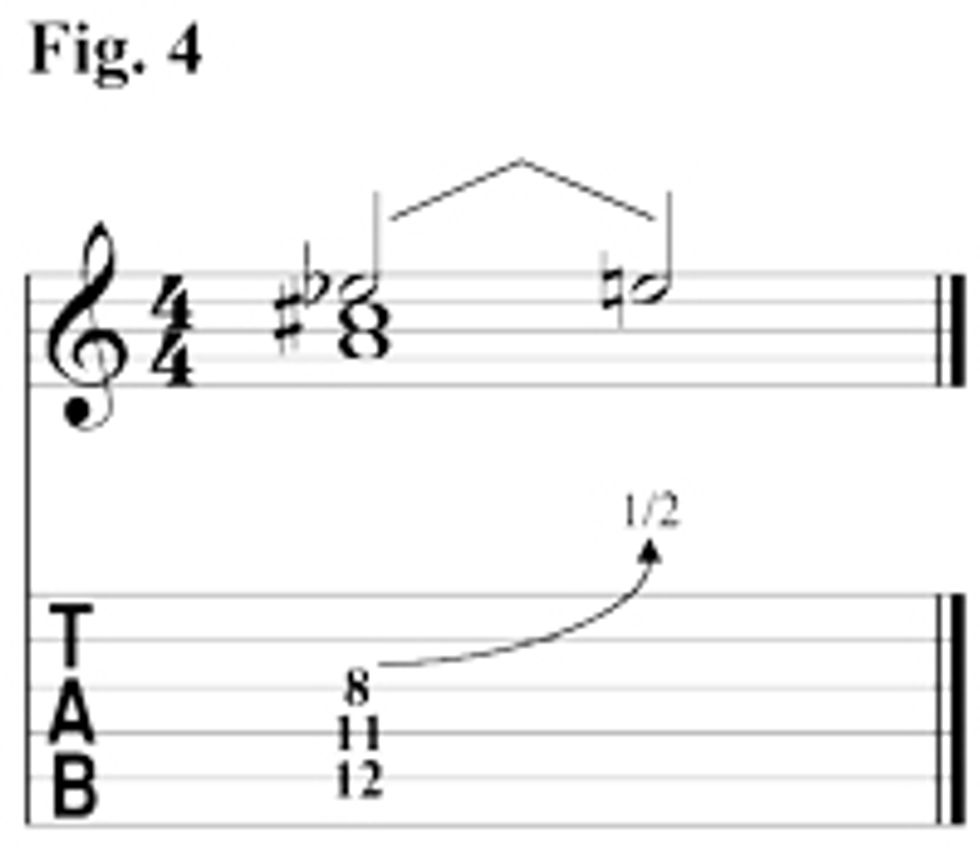
In Fig. 5 we combine the root position triad with a pre-bend. This time we start with the diatonic note above the 5th (F#) and resolve to the E on the 3rd string.
or download example audio
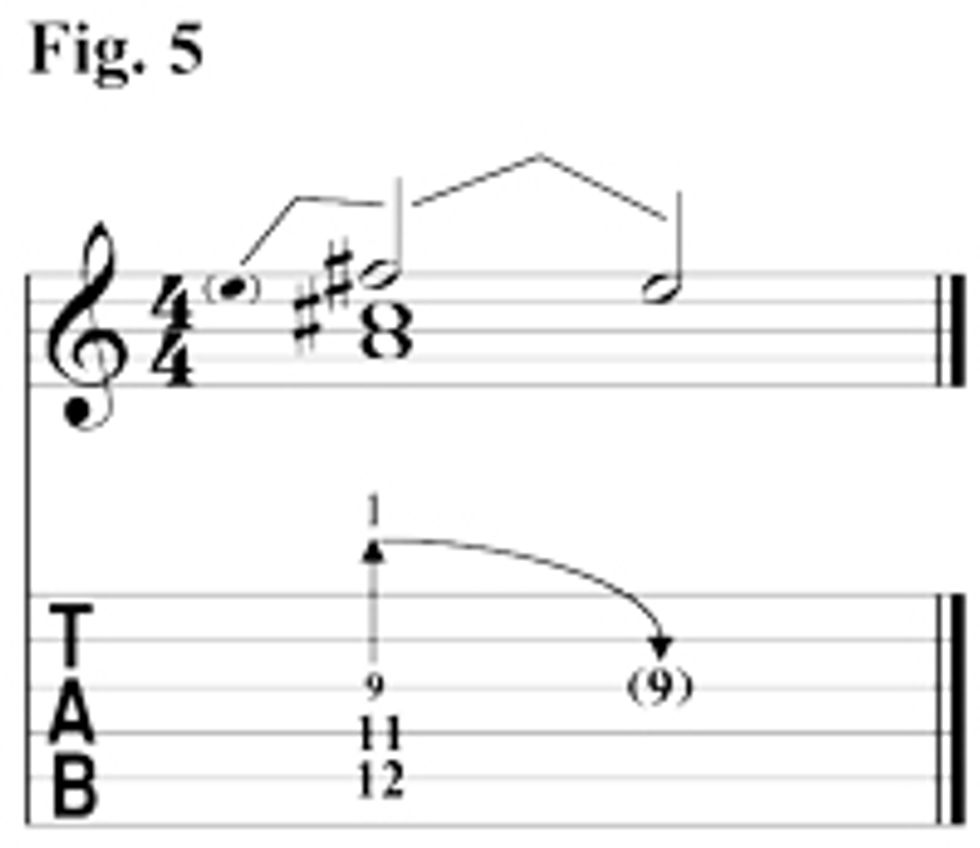
The final inversion is shown in Fig. 6. It can feel a little crowded at first but will become easier with a few reps. Focus on only moving the top note of the triad. The pre-bend version is demonstrated in Fig. 7.
or download example audio
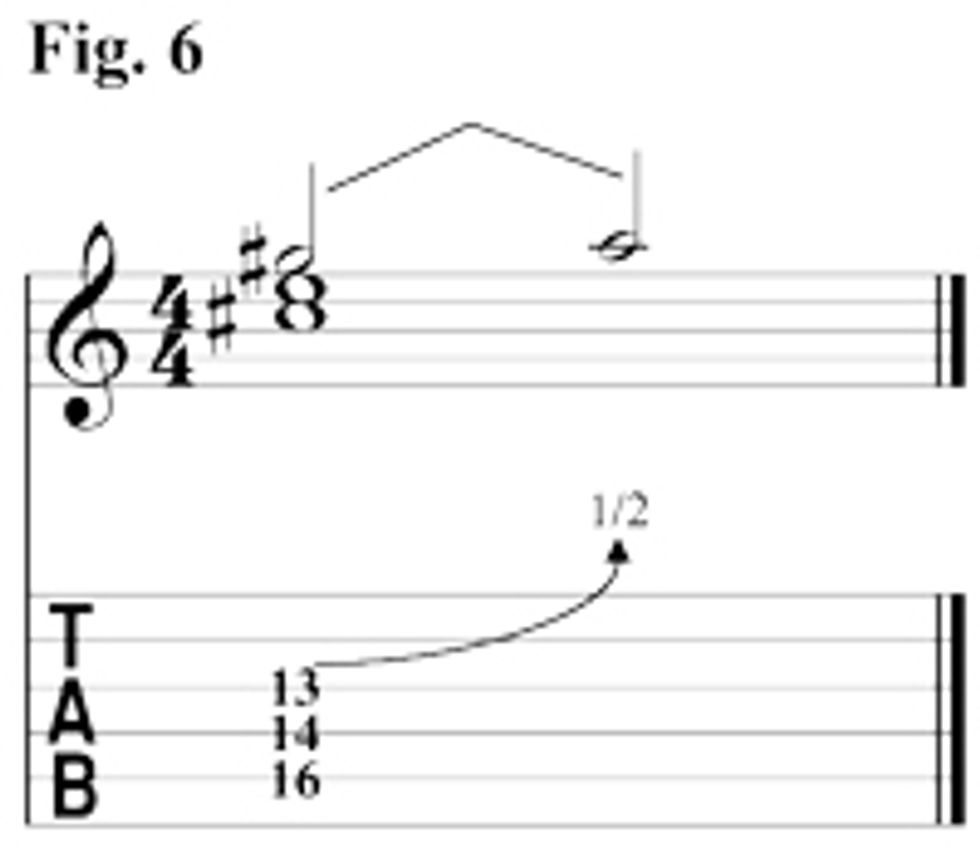
or download example audio
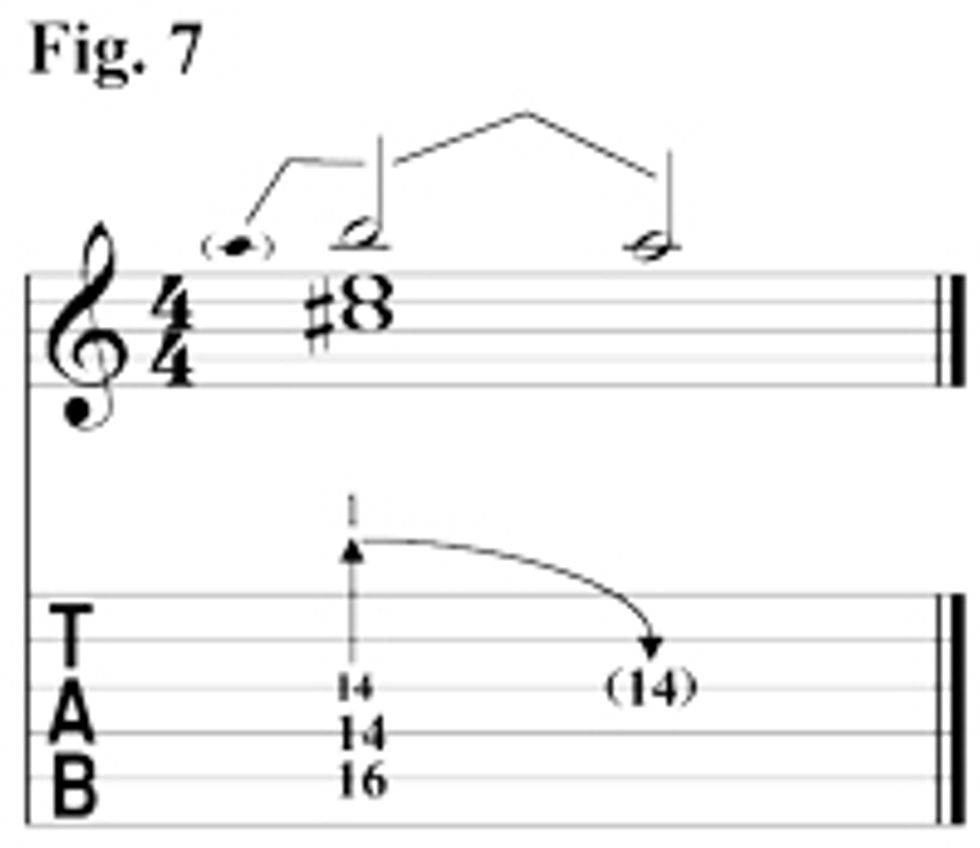
We put everything together in Fig. 8 with a nice little country waltz that uses all these inversion shapes. Try using this concept with minor, diminished and augmented triads. Pick slow tunes with simple progressions and begin writing some solos. Don’t be afraid to move these bending ideas to other keys as well. Pretty soon people will be wondering where you have hidden your knee levers and foot pedals!
or download example audio
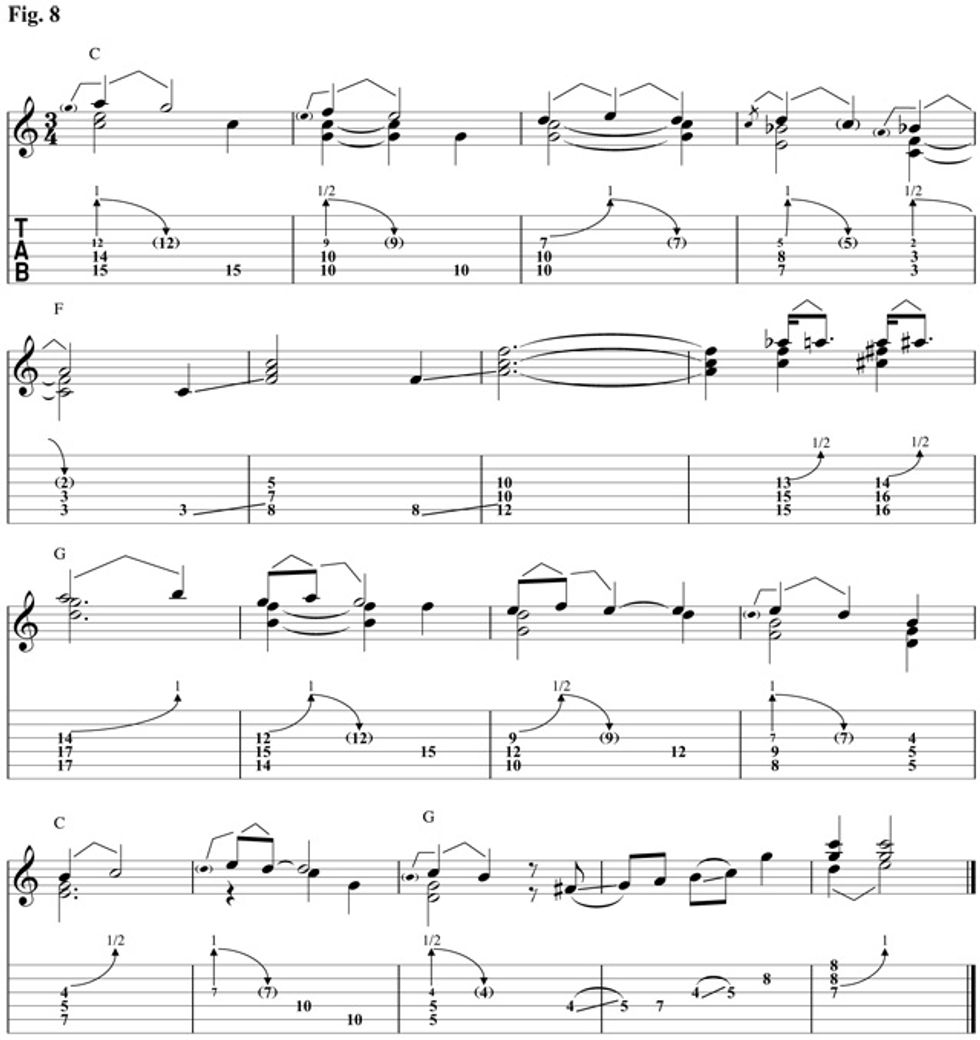
 Jason Loughlin is a Brooklyn based guitarist, producer, educator, composer and founder of Big Pop Records. His creative guitar playing has supported artists such as Amos Lee, Rachael Yamagata, James Burton and Lesley Gore. His new record Peach Crate is now available everywhere. His new Truefire instructional DVD 50 Rockabilly Licks You Must Know will be out in the fall. For all other info check his website jasonloughlin.com
Jason Loughlin is a Brooklyn based guitarist, producer, educator, composer and founder of Big Pop Records. His creative guitar playing has supported artists such as Amos Lee, Rachael Yamagata, James Burton and Lesley Gore. His new record Peach Crate is now available everywhere. His new Truefire instructional DVD 50 Rockabilly Licks You Must Know will be out in the fall. For all other info check his website jasonloughlin.com